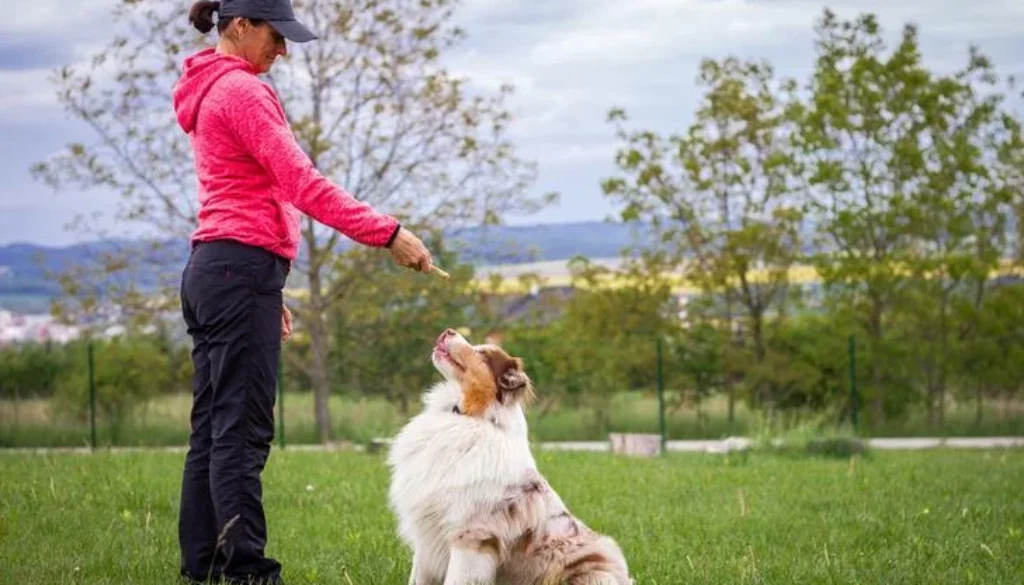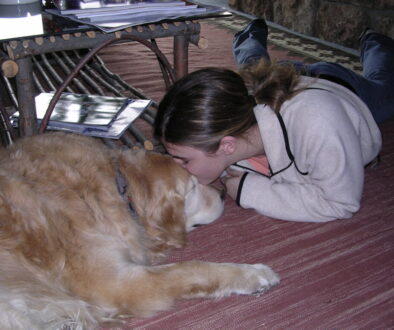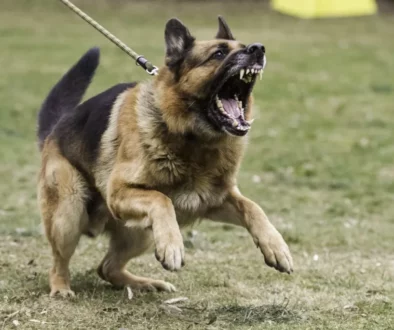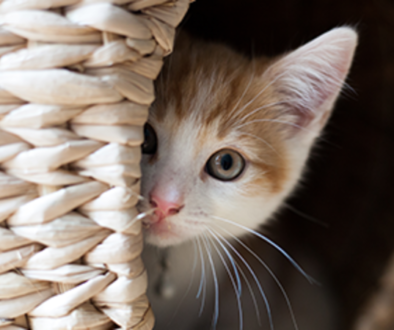Choosing the Perfect Pet Trainer: Essential Considerations for Pet Owners
Pet ownership comes with immense joy and responsibility. As pet owners, we strive to provide the best care and environment for our furry companions. One crucial aspect of this care is pet training. Whether you have a playful pup, a curious cat, or any other beloved animal, proper training is essential for their well-being and harmonious integration into your household. A qualified pet trainer will tailor their approach to suit your pet’s individual needs and personality.
In this comprehensive guide, we will explore the vital considerations every pet owner should keep in mind when selecting the perfect pet trainer. From understanding your pet’s unique needs to evaluating potential trainers and monitoring progress, we’ll cover everything you need to know to make an informed decision.
Understanding Your Pet’s Needs: Recognizing Individuality
Every pet, whether a playful puppy or a curious kitten, possesses its own set of unique needs and behaviors. Understanding and acknowledging these individual differences is crucial for effective pet training. Just like humans, pets have distinct personalities, temperaments, and learning styles that influence how they respond to training methods.
For instance, some dogs may be naturally outgoing and eager to please, making them ideal candidates for obedience training using positive reinforcement techniques. On the other hand, certain breeds or individual animals may be more independent or reserved, requiring a more patient and tailored approach to training.
Likewise, cats have their own unique set of characteristics that influence their behavior and responses to training. While cats are often stereotyped as aloof or untrainable, they are actually highly intelligent creatures capable of learning and adapting to their environment. Understanding a cat’s natural instincts, preferences, and communication cues is key to successful training and building a strong bond between pet and owner.
In summary, recognizing the individuality of your pet is essential for effective training. By taking the time to understand their unique needs, behaviors, and temperament, you can tailor your training approach to suit their specific requirements and maximize the likelihood of success.
Qualities of a Good Pet Trainer: Keys to Success
When it comes to choosing a pet trainer, not all are created equal. The success of your pet’s training journey largely depends on the qualities and expertise of the trainer guiding them. Here are some essential qualities that every good pet trainer should possess:
- Patience: Patience is a virtue, especially when it comes to working with animals. A good pet trainer understands that every pet learns at their own pace and may require repetition and reinforcement to grasp new concepts. They remain calm and composed, even in challenging situations, and provide gentle guidance and encouragement throughout the training process.
- Experience: Experience matters when it comes to pet training. Look for trainers who have a proven track record of success and extensive experience working with a variety of pets. Experienced trainers are better equipped to assess your pet’s individual needs, tailor training programs accordingly, and troubleshoot any issues that may arise along the way.
- Empathy: Empathy is the ability to understand and share the feelings of another. A good pet trainer possesses empathy not only towards their animal clients but also towards their human counterparts. They take the time to listen to your concerns, address any questions or doubts you may have, and provide compassionate support every step of the way.
- Communication: Effective communication is key to any successful relationship, including the one between pet owners and trainers. A good pet trainer communicates clearly and effectively, explaining training techniques and expectations in a way that is easy to understand. They also maintain open lines of communication, keeping you informed of your pet’s progress and addressing any concerns or questions you may have promptly.
- Positive Reinforcement Techniques: Positive reinforcement is a powerful training tool that rewards desired behaviors with praise, treats, or other rewards. A good pet trainer utilizes positive reinforcement techniques to motivate and encourage pets, creating a fun and enjoyable learning environment. By focusing on rewarding good behavior rather than punishing bad behavior, positive reinforcement helps build trust, confidence, and a strong bond between pet and owner.
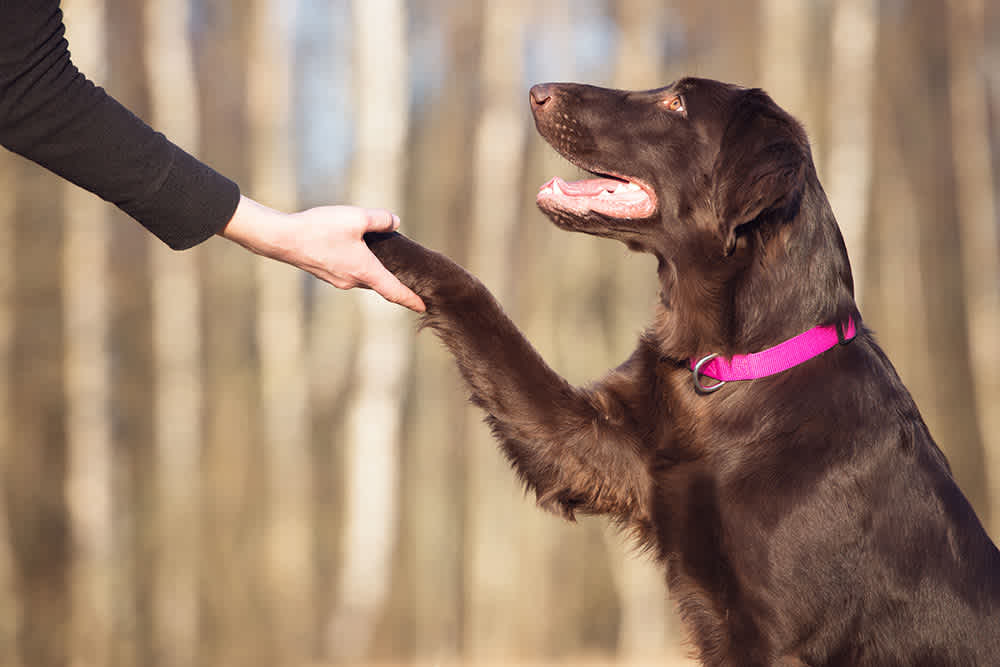
Researching Potential Trainers: Finding the Right Fit
When it comes to finding the perfect pet trainer for your furry friend, conducting thorough research is essential. Here’s a guide on how to find potential trainers through various channels:
- Local Resources: Start your search by exploring local resources in your community. This could include pet stores, veterinary clinics, or animal shelters that offer training services or can provide recommendations. Attend pet-related events or seminars in your area to network with other pet owners and gather information about reputable trainers.
- Online Reviews: The internet is a valuable tool for researching potential pet trainers. Look for online directories or review websites that list pet training services in your area. Read reviews and testimonials from other pet owners to get a sense of the trainer’s reputation, reliability, and effectiveness. Keep in mind that while online reviews can be helpful, they should be considered alongside other factors when making your decision.
- Recommendations: Word of mouth is often one of the most reliable ways to find a good pet trainer. Ask friends, family members, or fellow pet owners for recommendations based on their own experiences. Personal referrals can provide valuable insights into the trainer’s approach, communication style, and results.
- Credentials and Certifications: When researching potential trainers, take the time to verify their credentials and certifications. Look for trainers who have completed formal training programs or certifications from reputable organizations such as the Certification Council for Professional Dog Trainers (CCPDT) or the International Association of Animal Behavior Consultants (IAABC). These credentials demonstrate a commitment to professional development and adherence to ethical standards in pet training.
- Visit Training Facilities: If possible, visit the training facilities of potential trainers to assess the environment and resources available. Look for clean, well-maintained facilities with adequate space for training sessions. Pay attention to the trainer’s interaction with their own animals and other clients’ pets to get a sense of their training methods and philosophy.
By utilizing a combination of local resources, online reviews, recommendations, and personal visits, you can gather valuable information to help you make an informed decision when choosing a pet trainer for your furry companion.
Interviewing Potential Trainers: Asking the Right Questions
Once you’ve narrowed down your list of potential pet trainers, it’s time to conduct interviews to determine which one is the best fit for you and your pet. Here are some questions to ask during the interview process:
- Experience and Training:
- How long have you been working as a pet trainer?
- What type of training methods do you use?
- Have you received any formal education or certifications in pet training?
- Approach to Training:
- Can you describe your training philosophy?
- How do you tailor your training methods to meet the individual needs of each pet?
- Do you use positive reinforcement techniques?
- Credentials and References:
- Can you provide references from previous clients?
- Do you have any certifications or memberships with professional pet training organizations?
- Training Programs and Packages:
- What types of training programs do you offer?
- Do you offer individual sessions or group classes?
- What is included in your training packages, and what are the associated costs?
- Availability and Scheduling:
- What is your availability for training sessions?
- How far in advance do clients need to schedule appointments?
- Do you offer flexible scheduling options?
- Observing Training Sessions:
- Can I observe a training session to get a sense of your teaching style?
- How do you handle challenging behavior or situations during training sessions?
- Can you provide examples of successful outcomes from previous training sessions?
By asking these questions and observing training sessions firsthand, you can gain valuable insights into a potential trainer’s expertise, approach, and compatibility with your pet’s needs and your own preferences.
Assessing Training Methods: Finding the Right Approach
Pet training encompasses a variety of methods and techniques, each with its own advantages and considerations. Here are some common training approaches and how to determine which is best suited for your pet’s needs:
- Positive Reinforcement: Positive reinforcement is a widely used and highly effective training method that rewards desired behaviors with praise, treats, or other rewards. This approach focuses on reinforcing good behavior rather than punishing bad behavior, creating a positive learning environment for pets. Positive reinforcement is particularly well-suited for building trust, confidence, and a strong bond between pet and owner.
- Clicker Training: Clicker training is a form of positive reinforcement that uses a small handheld device called a clicker to mark desired behaviors. When the pet performs the desired behavior, the trainer immediately clicks the clicker and then rewards the pet with a treat or praise. Clicker training is popular for its precision and clarity, making it an effective tool for teaching complex behaviors and shaping desired responses.
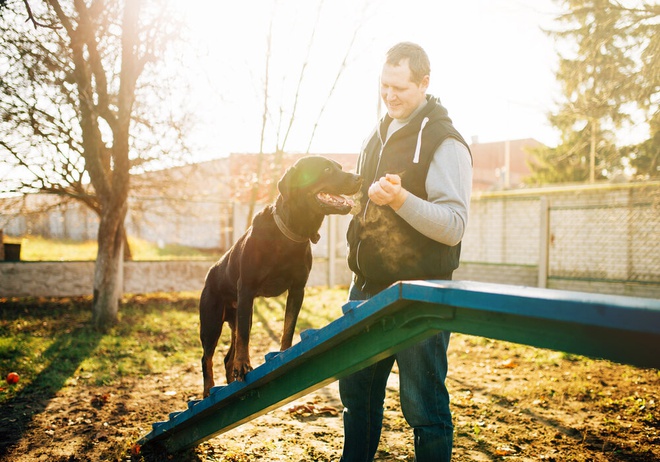
- Marker Training: Marker training is similar to clicker training but uses a verbal marker such as “yes” or “good” instead of a clicker to mark desired behaviors. Like clicker training, marker training relies on the immediate association between the marker and the reward to reinforce good behavior. Marker training is versatile and can be used in a variety of training scenarios, making it a valuable tool for pet owners and trainers alike.
- Behavioral Modification: Behavioral modification techniques are used to address specific behavioral issues or problems in pets, such as aggression, anxiety, or fearfulness. These techniques often involve identifying the underlying cause of the behavior and implementing strategies to modify or redirect it. Behavioral modification requires patience, consistency, and a thorough understanding of animal behavior principles.
Considering Training Facilities: Creating a Safe and Positive Environment
When choosing a pet trainer, the training facility plays a significant role in your pet’s learning experience. Here’s why cleanliness, safety, and available resources are crucial considerations:
- Cleanliness: A clean training facility is essential for the health and well-being of both pets and humans. Look for a facility that maintains high standards of cleanliness, with well-maintained floors, equipment, and training areas. A clean environment not only reduces the risk of illness and injury but also creates a positive and welcoming atmosphere for both pets and owners.
- Safety: Safety should be a top priority in any training facility. Ensure that the facility is equipped with safety measures such as secure fencing, non-slip surfaces, and adequate supervision during training sessions. Trainers should be trained in pet first aid and CPR, and emergency procedures should be clearly communicated to staff and clients. By prioritizing safety, you can provide your pet with a secure and stress-free learning environment.
- Available Resources: A well-equipped training facility provides the tools and resources needed for effective training sessions. Look for facilities that offer a variety of training equipment, such as agility obstacles, obedience aids, and interactive toys. Additionally, consider the availability of amenities such as water stations, rest areas, and designated play areas for pets. Having access to these resources enhances the training experience and allows for more varied and engaging sessions.
By choosing a training facility that prioritizes cleanliness, safety, and available resources, you can ensure that your pet receives the best possible training experience in a positive and supportive environment.
Cost Considerations: Finding Value in Pet Training
Pet training costs can vary widely depending on factors such as the trainer’s experience, the type of training program, and the duration of sessions. Here’s how to evaluate the various costs associated with pet training in relation to value and affordability:
- Training Packages: Many pet trainers offer training packages that include a set number of sessions or a comprehensive training program. Compare the costs and features of different packages to determine which offers the best value for your money. Consider factors such as the duration of sessions, the frequency of training, and any additional services or resources included in the package.
- Individual Sessions: If you prefer a more flexible approach to training, consider opting for individual training sessions instead of a package. While individual sessions may be more expensive on a per-session basis, they offer greater flexibility in scheduling and allow you to tailor the training experience to your pet’s specific needs and progress.
- Additional Costs: Be sure to inquire about any additional costs associated with pet training, such as training equipment, training aids, or travel fees for in-home sessions. Factor these costs into your budget when evaluating the overall affordability of a training program.
- Value vs. Affordability: When evaluating the cost of pet training, it’s essential to consider the value you’ll receive in return. A higher upfront cost may be justified if it results in a well-trained and well-behaved pet, ultimately saving you time, money, and frustration in the long run. However, affordability is also an important consideration, so be sure to choose a training program that fits within your budget without compromising on quality or effectiveness.
By carefully evaluating the costs associated with pet training and considering factors such as value, affordability, and your pet’s individual needs, you can make an informed decision that provides the best possible outcome for you and your furry companion.
Tailoring Training Programs: Customizing for Success
Every pet is unique, with its own personality, temperament, and learning style. Tailoring training programs to meet your pet’s specific needs and preferences is essential for success. Here’s why customized training programs and flexibility in scheduling are important considerations:
- Individualized Attention: One-size-fits-all training approaches may not be effective for every pet. A customized training program takes into account your pet’s breed, age, behavior, and learning history, allowing the trainer to tailor their approach to suit your pet’s individual needs. Whether your pet is a playful puppy or a mature dog, a customized program ensures that they receive the attention and guidance they need to succeed.
- Flexibility in Scheduling: Life can be unpredictable, and scheduling conflicts may arise that affect your ability to attend training sessions. A trainer who offers flexibility in scheduling allows you to work around your busy schedule and find convenient times for training sessions that fit your lifestyle. Whether you prefer daytime, evening, or weekend sessions, a flexible trainer can accommodate your needs and ensure that you and your pet can stay on track with your training goals.
- Progress Monitoring and Adjustments: A customized training program allows the trainer to closely monitor your pet’s progress and make adjustments to the training plan as needed. If certain techniques or approaches are not producing the desired results, the trainer can modify the program to better suit your pet’s needs and learning style. This flexibility ensures that your pet receives the most effective and efficient training experience possible, leading to faster and more consistent progress.
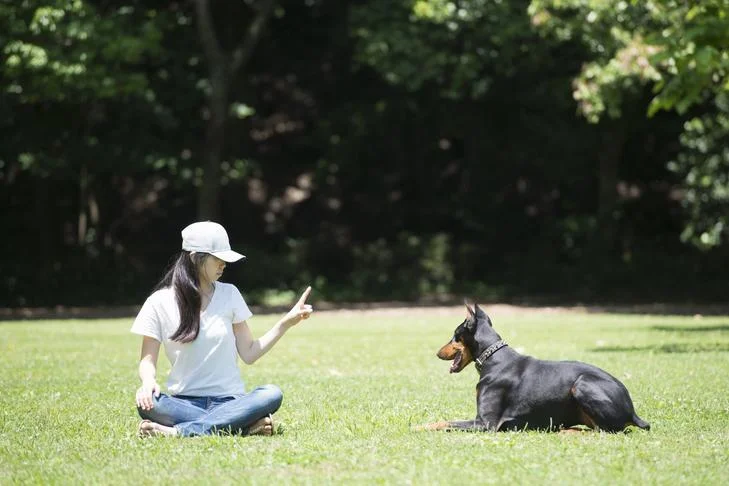
Monitoring Progress: Tracking Your Pet’s Training Journey
Tracking your pet’s progress throughout the training process is essential for assessing their development and making necessary adjustments to the training plan. Here’s how to effectively monitor your pet’s progress:
- Set Clear Goals: Begin by establishing clear, achievable goals for your pet’s training. Whether it’s mastering basic commands, overcoming behavioral issues, or learning specialized skills, having specific objectives in mind will help you track progress more effectively.
- Keep Detailed Records: Keep a training journal or log where you can record key information such as training sessions attended, behaviors practiced, and any notable progress or setbacks observed. Note any improvements in your pet’s behavior or performance, as well as areas that may require additional focus or attention.
- Use Objective Measures: Incorporate objective measures into your progress tracking, such as the number of commands mastered, the duration of desired behaviors, or the frequency of undesirable behaviors. Use quantifiable data whenever possible to track progress accurately over time.
- Observe Behavior Changes: Pay close attention to your pet’s behavior both during and outside of training sessions. Look for signs of improvement, such as increased responsiveness to commands, decreased anxiety or aggression, or greater confidence in challenging situations. Conversely, be alert to any regressions or new issues that may arise and address them promptly.
- Seek Feedback from the Trainer: Regularly communicate with your pet trainer to discuss your pet’s progress and receive feedback on their performance. Your trainer can provide valuable insights and guidance based on their observations and expertise, helping you identify areas of improvement and adjust the training plan as needed.
- Celebrate Milestones: Celebrate your pet’s achievements and milestones along the way. Whether it’s mastering a difficult trick, overcoming a fear or phobia, or simply showing improvement in obedience and behavior, acknowledging and rewarding progress reinforces positive behavior and motivates continued learning.
By consistently monitoring your pet’s progress, staying proactive in addressing challenges, and maintaining open communication with your trainer, you can ensure that your pet receives the support and guidance they need to succeed in their training journey.
Communication with the Trainer: Fostering Collaboration and Support
Effective communication with your pet trainer is key to ensuring a successful training experience for both you and your furry friend. Here’s why open communication is essential and how to foster collaboration and support:
- Addressing Concerns and Issues: Open communication allows you to express any concerns or issues you may have regarding your pet’s training progress, behavior, or overall well-being. Whether it’s a specific behavior you’re struggling with, a scheduling conflict, or a question about training techniques, don’t hesitate to reach out to your trainer for guidance and support.
- Providing Feedback: Regularly provide feedback to your trainer on your pet’s progress, as well as your own satisfaction with the training program. Share observations, successes, and challenges you’ve experienced during training sessions, and be honest about what’s working well and what may need adjustment.
- Clarifying Expectations: Clearly communicate your expectations and goals for your pet’s training to your trainer. Discuss any specific behaviors or skills you’d like to focus on, as well as any training methods or techniques you prefer or prefer to avoid. By aligning expectations upfront, you can ensure that you and your trainer are on the same page and working towards common objectives.
- Seeking Guidance and Advice: Your pet trainer is a valuable resource for pet care advice, behavior management strategies, and training tips. Don’t hesitate to reach out to them for guidance and support whenever you have questions or need assistance. Whether it’s troubleshooting a behavior issue, refining training techniques, or seeking recommendations for additional resources, your trainer is there to help.
- Building Trust and Rapport: Building a strong rapport and trusting relationship with your trainer is essential for effective communication. Be open, respectful, and receptive to feedback, and maintain a positive and collaborative attitude throughout the training process. By fostering trust and mutual respect, you can create a supportive and productive partnership that benefits both you and your pet.
By maintaining open lines of communication, addressing concerns and issues proactively, and fostering collaboration and support with your pet trainer, you can ensure a positive and successful training experience for your furry companion.
Building a Long-Term Relationship: Nurturing Continued Support
While pet training may begin as a short-term endeavor, building a long-term relationship with your pet trainer can provide ongoing support and guidance for you and your furry friend. Here’s why maintaining a lasting connection with your trainer is important:
- Continued Support: Pet training is an ongoing process that requires consistency, patience, and ongoing support. By maintaining a long-term relationship with your trainer, you can access continued guidance, advice, and assistance as your pet grows and develops. Whether it’s addressing new behavior challenges, refining existing skills, or exploring advanced training techniques, your trainer can provide valuable support and expertise to help you and your pet succeed.
- Adapting to Changing Needs: As your pet’s needs and abilities evolve over time, so too may your training goals and priorities. A long-term relationship with your trainer allows for flexibility and adaptability in addressing changing needs and circumstances. Whether it’s transitioning from puppy training to adult obedience, addressing age-related issues in senior pets, or exploring specialized training for service or therapy work, your trainer can tailor their approach to meet your evolving needs and goals.
- Consistency and Familiarity: Pets thrive on routine, consistency, and familiarity. By maintaining a long-term relationship with your trainer, you provide your pet with a sense of stability and continuity in their training experience. Familiarity with your trainer’s teaching style, communication methods, and training techniques can enhance learning and retention, leading to more consistent and reliable results over time.
- Building Trust and Confidence: Building a long-term relationship with your trainer fosters trust, confidence, and rapport between you, your pet, and the trainer. Trust is essential for effective communication, collaboration, and learning, and a strong bond with your trainer can enhance your pet’s willingness to engage in training and follow your guidance. By nurturing a positive and supportive relationship with your trainer, you create a foundation for success and growth in your pet’s training journey.
- Community and Networking: Building a long-term relationship with your trainer also provides opportunities for community and networking with other pet owners. By participating in group classes, workshops, or events hosted by your trainer, you can connect with other pet owners, share experiences and insights, and build a supportive network of fellow enthusiasts. These connections can enrich your training experience, provide additional resources and perspectives, and create lasting friendships within the pet community.
By investing in a long-term relationship with your pet trainer, you can access continued support, guidance, and expertise to help you and your furry friend thrive together for years to come.
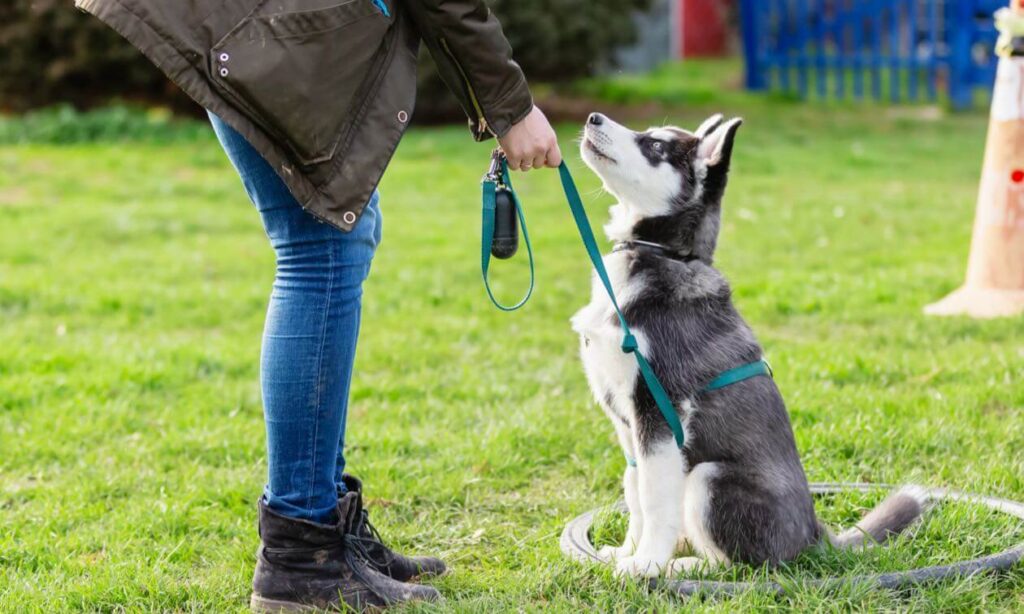
Considering Specialized Training: Enhancing Support and Assistance
Specialized training options offer unique benefits for service animals or therapy/emotional support animals, providing tailored assistance and support to individuals in need. Here’s a closer look at these specialized training options:
- Service Animal Training: Service animals play a crucial role in assisting individuals with disabilities in performing daily tasks and activities. Service animal training focuses on teaching specific skills and behaviors customized to the individual needs of the handler. This may include tasks such as guiding the visually impaired, alerting to medical conditions, retrieving objects, or providing mobility assistance. Service animal training programs emphasize reliability, consistency, and adherence to strict standards to ensure that the animal can effectively meet the handler’s needs and assist them in various environments and situations.
- Therapy/Emotional Support Animal Training: Therapy and emotional support animals provide comfort, companionship, and emotional support to individuals facing physical or mental health challenges. Therapy animal training focuses on teaching animals to interact with people in various settings, such as hospitals, nursing homes, schools, or therapy sessions. These animals are trained to be calm, well-behaved, and responsive to human emotions, providing comfort and assistance to those in need. Emotional support animal training focuses on developing a strong bond between the animal and their owner, as well as teaching specific behaviors to alleviate symptoms of anxiety, depression, or other emotional disorders.
By exploring specialized training options for service animals or therapy/emotional support animals, individuals can benefit from personalized assistance and support tailored to their unique needs and circumstances. These specially trained animals can make a significant difference in the lives of their handlers, providing companionship, independence, and emotional well-being.
Conclusion
Choosing the perfect pet trainer and investing in pet training is essential for the health, happiness, and well-being of your furry companion. Throughout this guide, we’ve explored the key considerations for pet owners when selecting a trainer and designing a training program tailored to their pet’s needs. From understanding your pet’s individuality to monitoring progress, maintaining open communication with the trainer, and considering specialized training options, each step plays a crucial role in shaping a positive and successful training experience.
Investing in pet training is an investment in your pet’s future. By prioritizing training and working with a skilled and dedicated pet trainer, you can help your furry friend develop the skills, behaviors, and confidence they need to thrive and enjoy a happy, healthy, and harmonious life alongside their human companions.
Also Read:
Pet Care Tips for Cats for Beginners
Pet Care Tips for Dogs for Beginners
